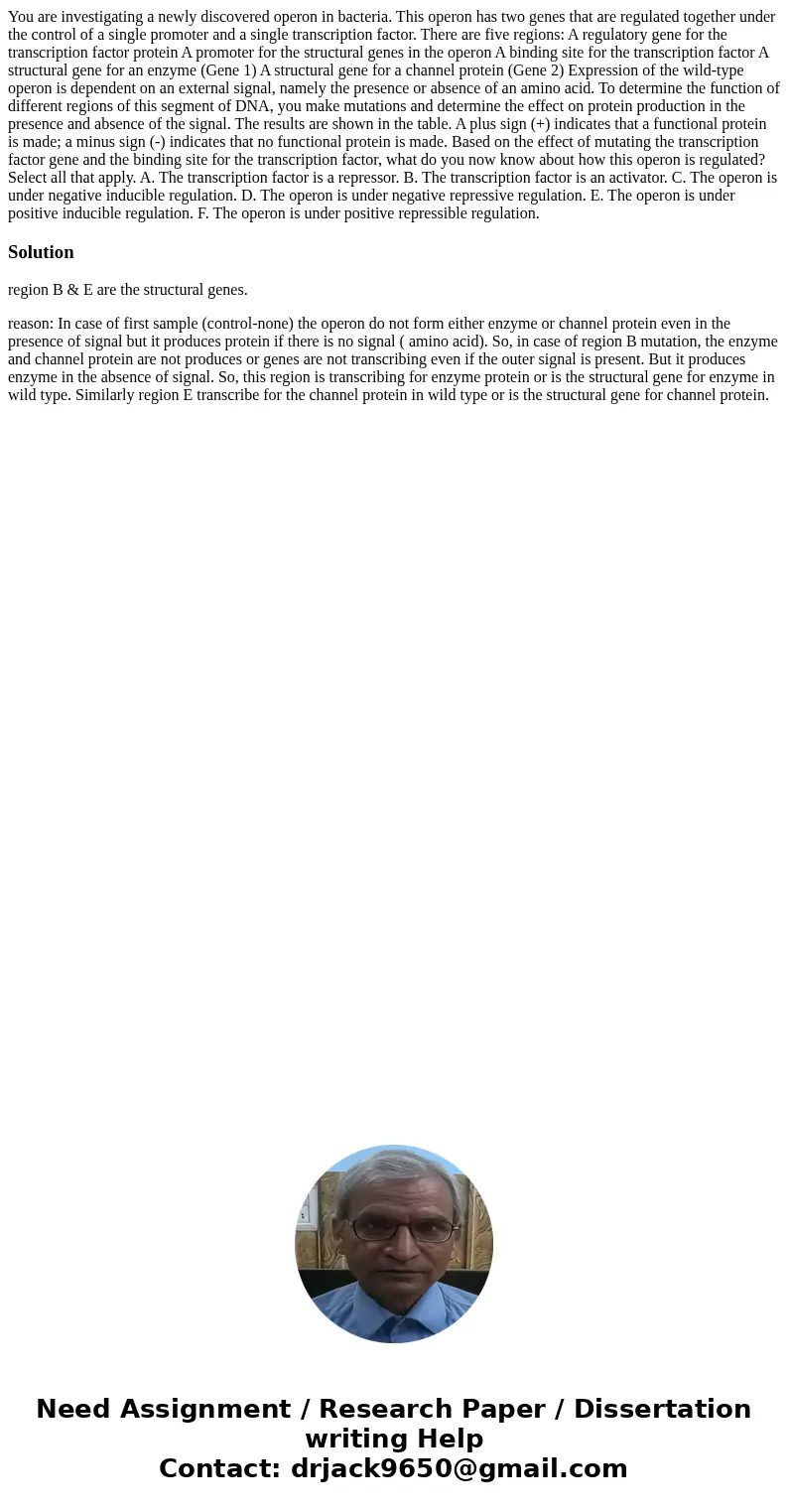You are investigating a newly discovered operon in bacteria
You are investigating a newly discovered operon in bacteria. This operon has two genes that are regulated together under the control of a single promoter and a single transcription factor. There are five regions: A regulatory gene for the transcription factor protein A promoter for the structural genes in the operon A binding site for the transcription factor A structural gene for an enzyme (Gene 1) A structural gene for a channel protein (Gene 2) Expression of the wild-type operon is dependent on an external signal, namely the presence or absence of an amino acid. To determine the function of different regions of this segment of DNA, you make mutations and determine the effect on protein production in the presence and absence of the signal. The results are shown in the table. A plus sign (+) indicates that a functional protein is made; a minus sign (-) indicates that no functional protein is made. Based on the effect of mutating the transcription factor gene and the binding site for the transcription factor, what do you now know about how this operon is regulated? Select all that apply. A. The transcription factor is a repressor. B. The transcription factor is an activator. C. The operon is under negative inducible regulation. D. The operon is under negative repressive regulation. E. The operon is under positive inducible regulation. F. The operon is under positive repressible regulation. 
Solution
region B & E are the structural genes.
reason: In case of first sample (control-none) the operon do not form either enzyme or channel protein even in the presence of signal but it produces protein if there is no signal ( amino acid). So, in case of region B mutation, the enzyme and channel protein are not produces or genes are not transcribing even if the outer signal is present. But it produces enzyme in the absence of signal. So, this region is transcribing for enzyme protein or is the structural gene for enzyme in wild type. Similarly region E transcribe for the channel protein in wild type or is the structural gene for channel protein.

 Homework Sourse
Homework Sourse